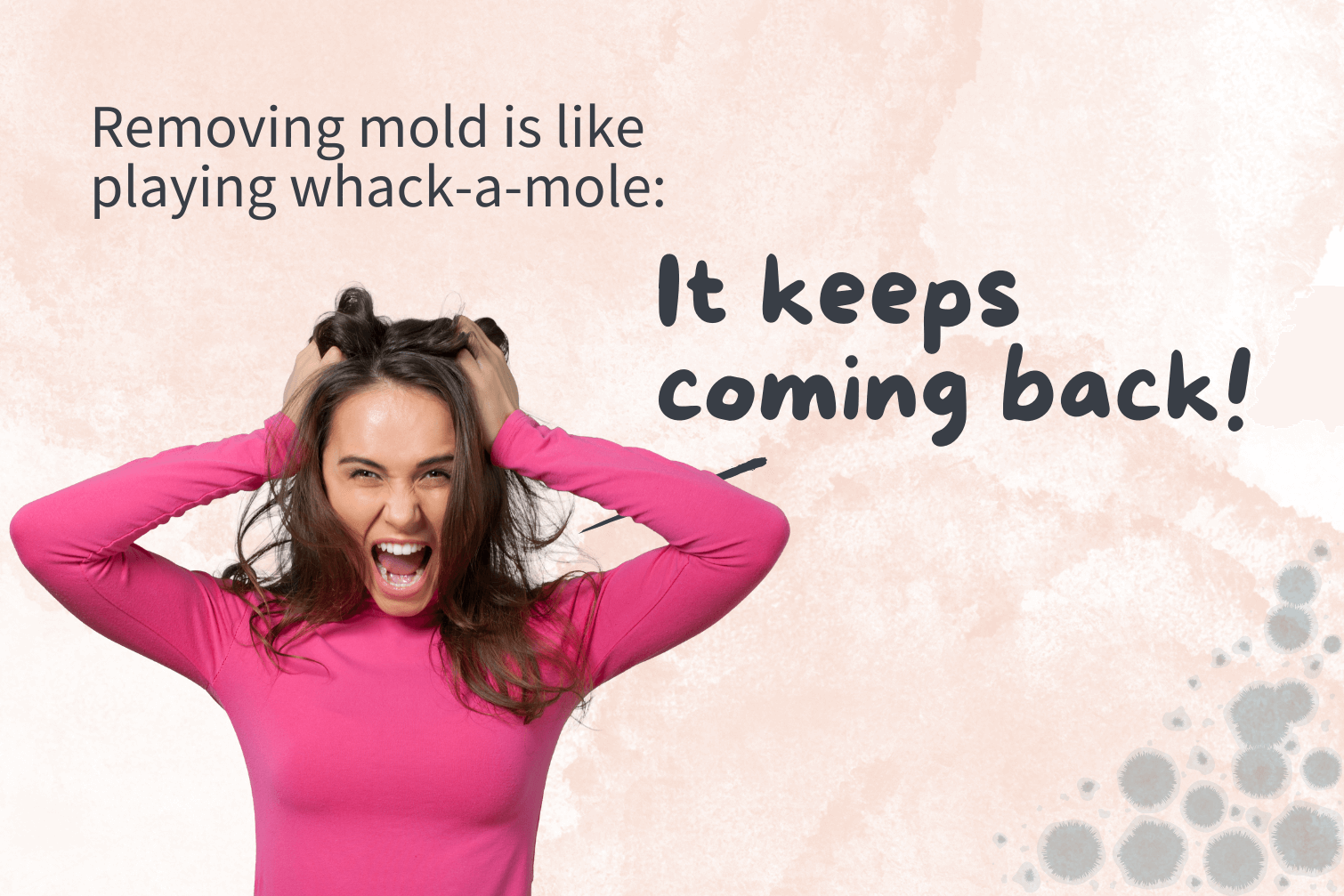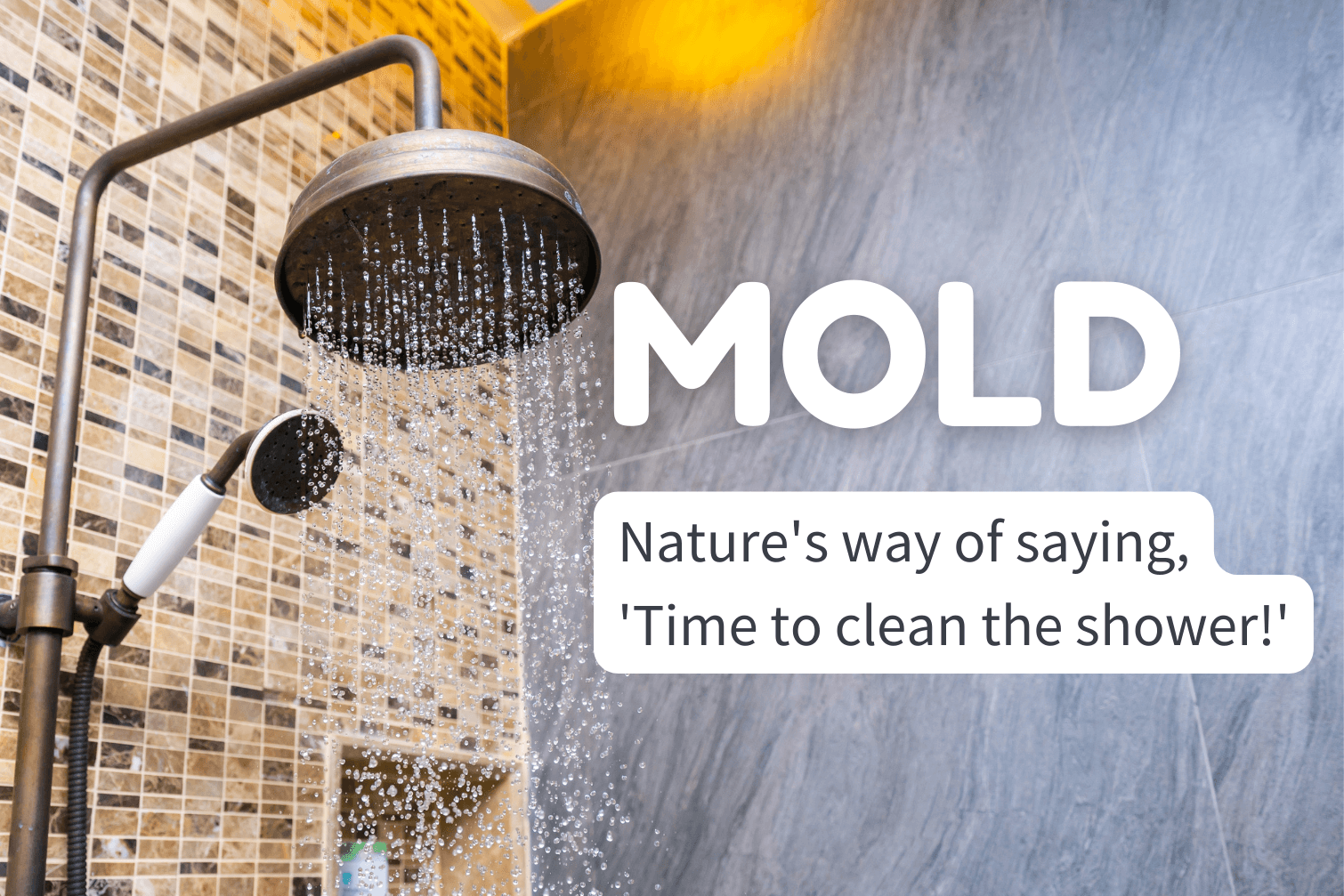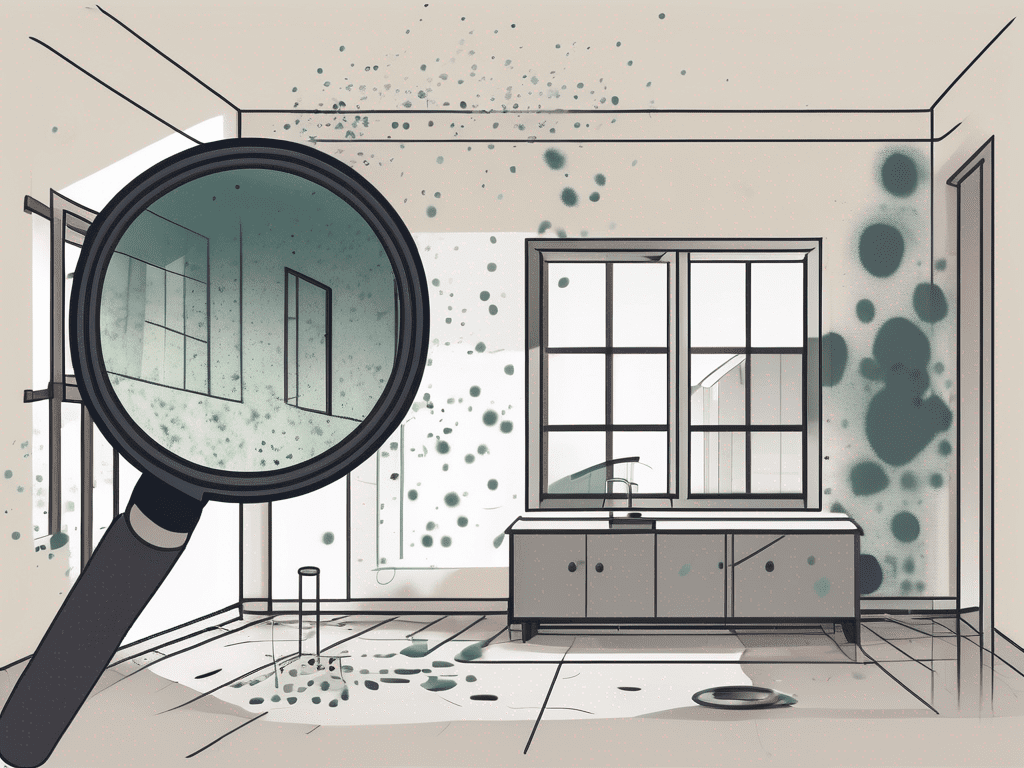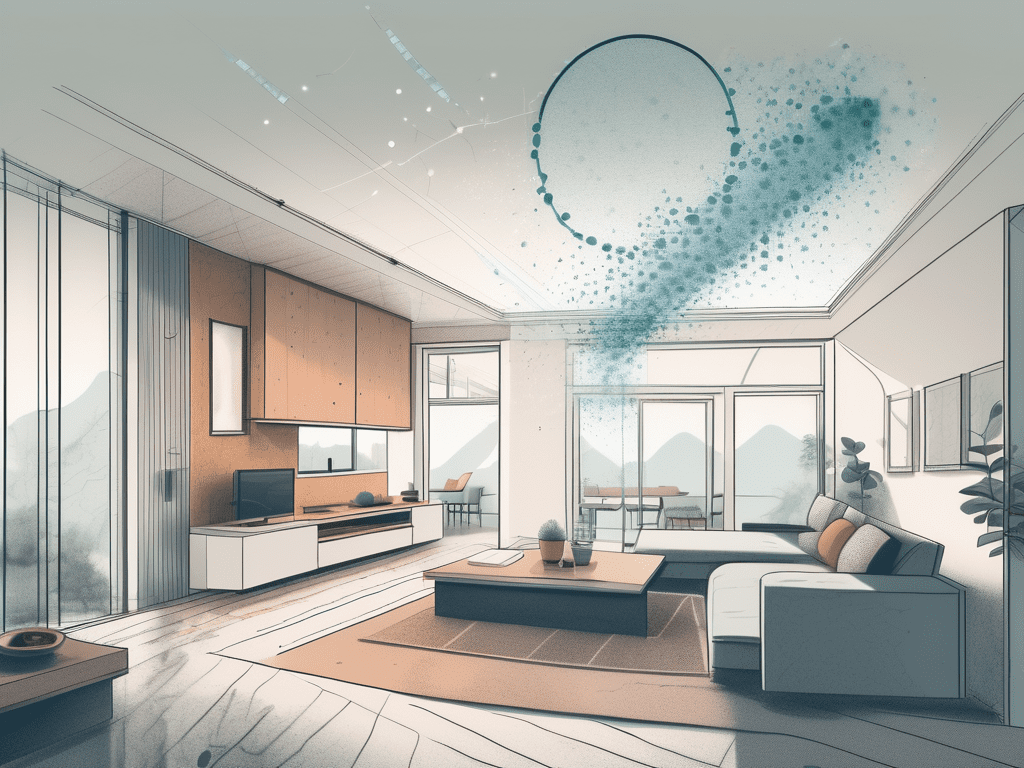Mold and mildew can be a real headache for homeowners. But don’t worry!
This comprehensive guide will cover the importance of mold and mildew removal, the risks associated with exposure, and the benefits of DIY removal techniques.
By the end of this post, you’ll be equipped with the knowledge to tackle these pesky problems head-on.
Identifying Mold and Mildew in Your Home
What’s the difference between mold and mildew?
Mold and mildew are both types of fungi. While they share similarities, they differ in appearance and the problems they cause. Mold tends to be fuzzy or slimy, with colors ranging from green to black. Mildew, on the other hand, is flat and powdery, typically appearing in white or gray.
Where can I find mold and mildew in my home?
Common areas to find mold and mildew include:
- Bathrooms (shower curtains, tile grout, sinks)
- Kitchens (under sinks, appliances, window sills)
- Basements (walls, flooring, insulation)
- Attics (insulation, vents, rafters)
How do I know if I have mold and mildew growth?
Signs and symptoms of mold and mildew growth include:
- Musty or damp odors
- Discoloration on walls, ceilings, or fabrics
- Respiratory issues or allergies
Preventative Measures for Mold and Mildew Growth
How can I prevent mold and mildew growth?
To prevent mold and mildew growth, follow these tips:
- Proper ventilation and airflow: Use exhaust fans in bathrooms and kitchens, and open windows when possible. Ensuring adequate airflow helps prevent the buildup of excess moisture, a primary cause of mold and mildew growth.
- Humidity control: Maintain indoor humidity levels between 30-50% using dehumidifiers or air conditioners. High humidity levels can lead to condensation, creating ideal mold and mildew growth conditions.
- Regular cleaning and maintenance: Clean susceptible areas frequently to prevent buildup. Regularly inspect and clean areas such as the bathroom, kitchen, and laundry room to avoid mold and mildew development.
- Leak repairs and moisture control: Address leaks and water damage promptly. Inspect your home for potential sources of moisture, such as leaking pipes or poor insulation, and take necessary corrective actions.
DIY Mold and Mildew Removal Techniques

What are some natural cleaning solutions for mold and mildew removal?
Natural cleaning solutions include:
- Vinegar: A versatile cleaner that kills 82% of mold species. Mix equal parts water and white vinegar in a spray bottle, apply to the affected area, let it sit for an hour, and then wipe clean.
- Baking soda: A gentle abrasive that also deodorizes. Mix 1/4 tablespoon of baking soda with water in a spray bottle, apply to the moldy area, scrub with a brush, and rinse.
- Hydrogen peroxide: A powerful disinfectant that kills mold and mildew on contact. Mix a solution of 3% hydrogen peroxide with water in a spray bottle, apply to the affected area, let it sit for 10 minutes, and then scrub and rinse.
- Tea tree oil: An effective fungicide with a strong scent. Mix one teaspoon of tea tree oil with one cup of water in a spray bottle, apply to the moldy area, and let it sit without rinsing.
- Grapefruit seed extract: A non-toxic, odorless option that kills mold spores. Mix 20 drops of grapefruit seed extract with two cups of water in a spray bottle, apply to the moldy area, and let it sit without rinsing.
Which commercial cleaning products should I use?
When choosing commercial cleaning products, look for:
- EPA registration: Ensure the product is proven to be effective.
- Non-toxic ingredients: Avoid harmful chemicals whenever possible.
- Positive user reviews: Check for testimonials from satisfied customers.
Popular and effective products include Concrobium Mold Control, Mold Armor, and RMR-86 Instant Mold Stain Remover.
How do I clean mold and mildew safely and effectively?
Follow these steps for proper cleaning:
- Safety precautions: Wear gloves, goggles, and a mask to protect yourself from mold spores and cleaning agents.
- Step-by-step cleaning process:
- Prepare the area: Remove any items from the affected area and cover surfaces that could be damaged by cleaning agents.
- Apply your chosen solution to the affected area: Use a spray bottle or cloth to apply your cleaning solution.
- Let it sit for the recommended time: Follow the instructions on the product label or allow natural solutions to sit for the suggested duration.
- Scrub with a brush or sponge: Use a scrub brush, toothbrush, or sponge to agitate the mold and mildew, ensuring it is completely removed.
- Rinse with water and dry thoroughly: Rinse the area with clean water and use a cloth or fan to dry the surface thoroughly to prevent regrowth.
When should I call in professional help?
Seek professional help if:
- The mold covers a large area (greater than 10 square feet).
- There is a strong musty odor that persists after cleaning.
- The mold has caused structural damage, such as wood rot or crumbling drywall.
- You are experiencing health issues related to mold exposure.
Post-Removal Steps
How do I keep mold and mildew from coming back?
To ensure mold and mildew do not return, consider these tips:
- Ongoing maintenance and prevention: Stay vigilant and promptly address potential mold and mildew issues. Perform regular inspections, especially during seasons with high humidity or after heavy rainfall.
- Improving indoor air quality: Use air purifiers or regularly change HVAC filters to reduce spores in the air. This can help prevent new mold growth and improve the overall air quality in your home.
- Inspect for water damage: Regularly check for water leaks, condensation, or any other signs of moisture issues. Keep an eye on areas like the roof, gutters, plumbing, and appliances for potential sources of water damage.
Additional DIY Tips and Tricks
- Use a hygrometer to monitor indoor humidity levels and adjust your home’s moisture control strategies accordingly.
- Consider using mold-resistant paint and building materials in areas prone to mold and mildew growth, such as bathrooms and basements.
- Regularly clean and maintain your home’s gutters and downspouts to prevent water damage that can lead to mold and mildew growth.
- Store items in well-ventilated areas and avoid overloading closets and cabinets, as tight spaces can promote mold and mildew growth.
DIY mold and mildew removal techniques are practical and budget-friendly solutions for homeowners.
By identifying mold and mildew growth, taking preventative measures, and using the right cleaning solutions, you can maintain a healthy, mold-free home.
Now that you know, it’s time to take action and tackle any mold and mildew problems in your home head-on. Good luck, and happy cleaning!






